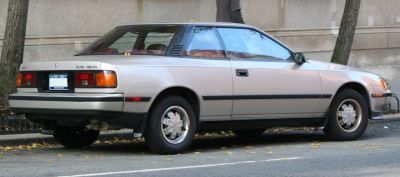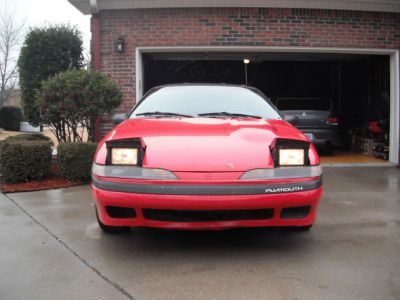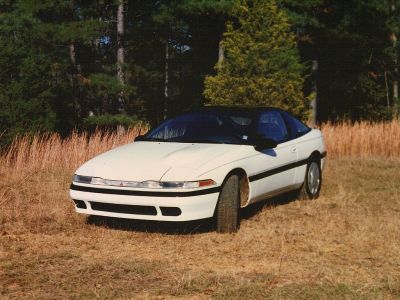 1978 Mazda RX 7 I (SA) Dimensions, Size & Specs
1978 Mazda RX 7 I (SA) Dimensions, Size & SpecsMeasurements of the 1978 Mazda RX 7 I, engineered for optimal performance and comfort
| Dimensions | |
|---|---|
| Length: | 4293 mm169.0 in14.1 ft |
| Width: | 1651 mm65.0 in5.4 ft |
| Height: | 1270 mm50.0 in4.2 ft |
| Trunk Capacity: | 391 liter13.8 cu ft |
| Weight Specifications | |
| Curb Weight: | 1086 kg2394 lbs |
| Maximal permitted Weight: | 1446 kg3188 lbs |
| Roof Load: | 50 kg110 lbs |
| Tire Specifications | |
| Rims Sizes: | 13-inch rims:
|
| Tire Size: |
|
The Mazda RX-7 I (SA), produced from 1979 to 1986 and introduced as a 1978 model, holds a distinguished place in the history of Japanese sports cars. This first-generation RX-7 coupe blends sleek styling with sporty dimensions that made it an icon of its time. Measuring 4293 mm (169.0 inches) in length, 1651 mm (65.0 inches) in width, and standing at 1270 mm (50.0 inches) tall, the RX-7 I offered a compact yet purposeful footprint ideal for spirited driving and agile handling. Weighing in at a relatively light curb weight of 1086 kg (2394 lbs) with a maximum permissible weight of 1446 kg (3188 lbs), the vehicle's lightweight construction helped enhance performance and fuel efficiency. The RX-7 I's luggage capacity of 391 liters (13.8 cubic feet) provided practical storage space for a sports coupe, suitable for weekend trips and daily use alike. The roof load capacity is rated at 50 kg (110 lbs), allowing for additional cargo solutions such as roof racks. Rolling on modest-sized rims of 5J x 13 and 5.5J x 13 paired with 185/70 R13 tires, the car maintained a balance between grip and comfort on the road. The SA generation RX-7 stands out with its rotary engine heritage and lightweight design, making it a rewarding choice for enthusiasts who appreciate driving dynamics and timeless coupe aesthetics. Whether for vintage car collectors or sports car lovers, the Mazda RX-7 I (SA) serves as a relevant example of 1980s sporty engineering, offering an optimal size for maneuverability combined with enough practicality for everyday use.
Discover the standout features that make the 1978 Mazda RX 7 I a leader in its class
Have a question? Please check our knowledgebase first.
The Mazda RX-7 I (SA) has a length of 4293 mm (approximately 169 inches), a width of 1651 mm (about 65 inches), and a height of 1270 mm (roughly 50 inches). These compact dimensions contribute to the RX-7’s sporty and agile appearance, making it a nimble coupe that fits well in urban settings while maintaining a sleek, aerodynamic profile indicative of classic Japanese sports cars from the late 1970s to mid-1980s.
The 1978 Mazda RX-7 I (SA) has a curb weight of 1086 kg (approximately 2394 lbs), which refers to the weight of the car without passengers or cargo but with all necessary operating consumables like fuel and fluids. The maximum weight capacity or Gross Vehicle Weight Rating (GVWR) is 1446 kg (around 3189 lbs), indicating the total weight of the vehicle including passengers, cargo, and any additional load it is designed to safely carry.
The RX-7 I (SA) offers a luggage capacity of 391 liters (equivalent to about 13.8 cubic feet). For a sporty coupe of its era, this capacity is relatively spacious and practical, enabling it to accommodate a moderate amount of luggage or gear, which complements its use as both a sporty and practical vehicle for daily driving or weekend trips.
The Mazda RX-7 I (SA) is equipped with rims sized 5J x 13 and 5.5J x 13, fitted respectively with tires sized 185/70 R13. This tire size and rim combination is typical for sporty compacts from the late 1970s and offers a balance of performance and comfort suited to the RX-7's lightweight and agile design.
Yes, the Mazda RX-7 I (SA) fits comfortably into a standard home garage. Given its compact dimensions — 4293 mm (169 in) in length, 1651 mm (65 in) in width, and 1270 mm (50 in) in height — it is smaller than many contemporary vehicles, making it easy to park and maneuver in typical residential garage spaces without requiring special accommodations.
The RX-7 I (SA) has a roof load capacity of 50 kg (about 110 lbs). This means it can safely support additional cargo such as roof racks or storage boxes without compromising structural integrity or safety. While the RX-7 is primarily a sporty coupe, the roof load capacity adds a practical dimension for carrying extra luggage or sporting equipment on trips.
The Mazda RX-7 I (SA) was the first generation of the RX-7 line and didn't have a direct predecessor within the RX-7 family itself. However, compared to earlier Mazda sports models like the RX-3, the RX-7 I was smaller and more lightweight, emphasizing compact dimensions: shorter length and narrower width, which improved agility and handling. Its design marked a significant shift towards more modern, aerodynamic sports coupes in Mazda’s history.
In comparison to other sports coupes of its era such as the Datsun 280ZX or Toyota Celica from the late 1970s and early 1980s, the Mazda RX-7 I (SA) was generally more compact and lighter. Its length of 4293 mm (169 in) and width of 1651 mm (65 in) made it slightly smaller than many rivals, which often contributed to better handling and agility. The RX-7’s lightweight nature (1086 kg or 2394 lbs curb weight) also helped it stand out as a nimble, driver-focused sports car.
The low height of just 1270 mm (50 inches) in the RX-7 I (SA) enhances its aerodynamic profile and center of gravity, improving performance and handling characteristics. This low stance not only adds to the sporty aesthetics but also allows the car to benefit from reduced air resistance and a more grounded feel during cornering. On the downside, it might affect visibility and headroom slightly, but typical for sports coupes of that period.
The compact length (4293 mm or 169 in), moderate width (1651 mm or 65 in), modest height (1270 mm or 50 in), and relatively low curb weight of 1086 kg (2394 lbs) significantly influence the RX-7 I (SA)'s driving dynamics. These characteristics allow for quick agility, responsive steering, and excellent balance, contributing to an engaging driving experience. The lightweight design improves acceleration and fuel efficiency compared to heavier sports cars of the era, making the RX-7 an iconic model known for its fun-to-drive nature.
Discover similar sized cars.

| Production: | 1986-1990 |
|---|---|
| Model Year: | 1985 |
| Length: | 4365-4380 mm171.9-172.4 in |
| Width: | 1710 mm67.3 in |
| Height: | 1290 mm50.8 in |

| Production: | 1989-1994 |
|---|---|
| Model Year: | 1990 |
| Length: | 4330 mm170.5 in |
| Width: | 1690 mm66.5 in |
| Height: | 1310 mm51.6 in |

| Production: | 1990-1992 |
|---|---|
| Model Year: | 1990 |
| Length: | 4330-4390 mm170.5-172.8 in |
| Width: | 1695 mm66.7 in |
| Height: | 1305-1321 mm51.4-52.0 in |
